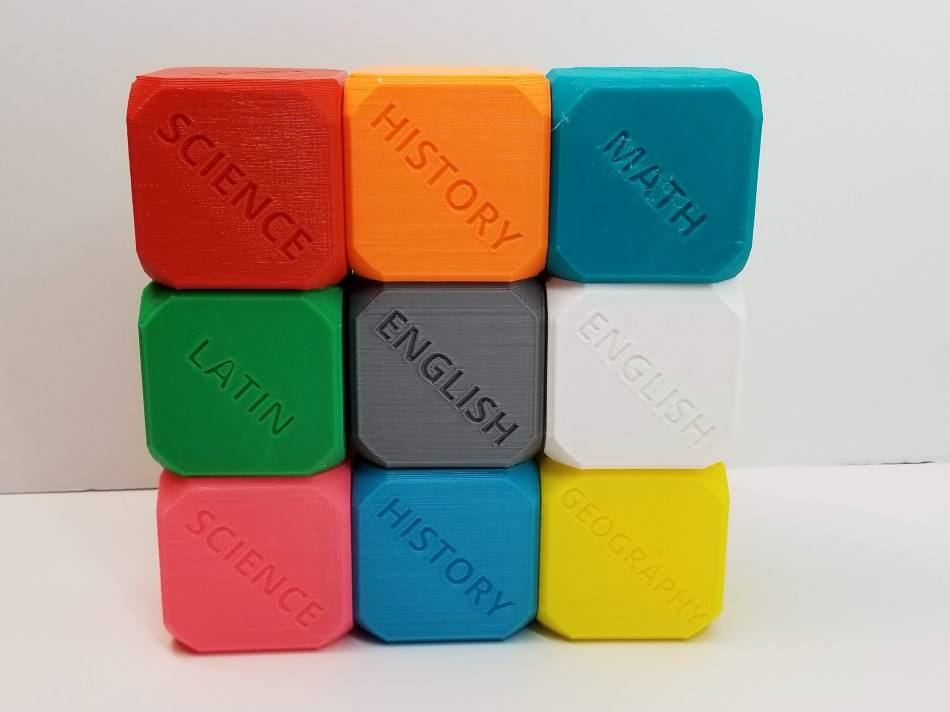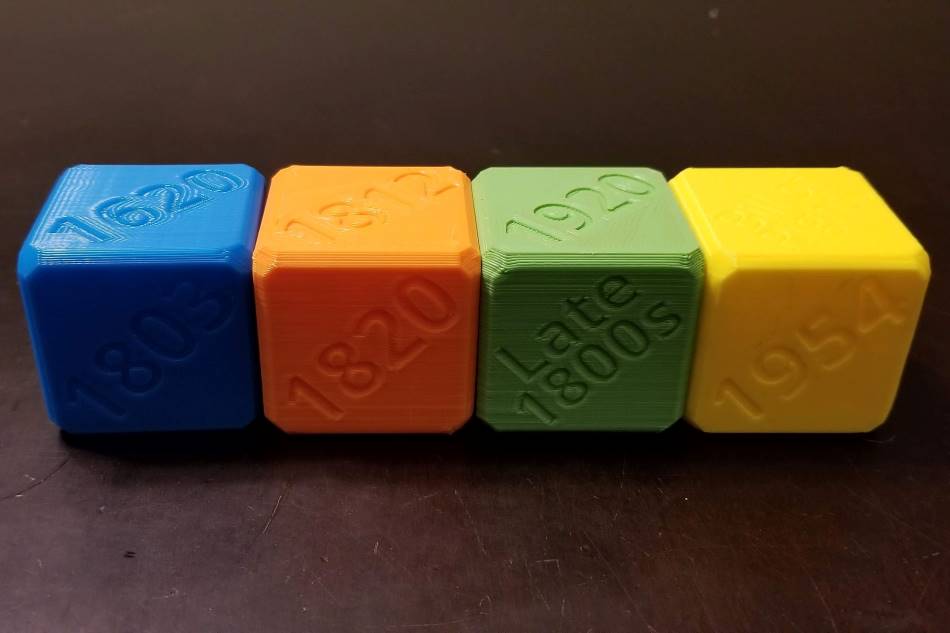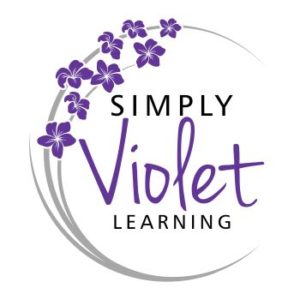Here are 10 awesome review games and ideas for reviewing our CC memory work. On Fridays, at our house, we do our Classical Conversations Review time with a game. I like to review the past 7 weeks of memory work. These are the ones I have found that work best with my littles ages 9 and under.
Puzzle Review
Pick any puzzle…bonus if its a USA states puzzle for this year with cycle 3. I will ask a child a question. Then they get to pick out one piece and put in on the table. Then I ask the next child a question, and they get to pick out a piece and put it in the correct spot. Sometimes when I have littles, I will just have all the kids answer together (or sing the song together) and then just one child picks a puzzle piece. This USA puzzle is nice because we can spread out on the floor and do it. If you finish the puzzle before your review is done, just tell the children they can pick up a piece once they answer a question and put it in the box. If you have the USA puzzle, you could even give an extra challenge of when they put the state piece away, they have to say the state and capitol.
Memory Review Die

This Memory Review Die has been amazing. It has a subject on each face. The child can roll the die and get a subject. Then I ask a question in that category. It has helped my kids feel more involved during review time. I actually got one for each child (and they picked their own color). This way there is less fighting then having to pass a die around.
The Memory Review Die is also great for tutors introducing new memory work in class. Just roll the die, and that is the next subject to teach. It is super durable because it it made out of plastic (no more flimsy paper ones or dry erase cubes that eventually rub off).
Nerf Guns
If you have boys, then is a great game! But then again, who doesn’t like nerf guns. So, first I set up by writing all the subjects (Math, Latin, English, Geography, Timeline, Science, History) on a white board and making bubbles around them. I place the white board a set distance away and mark the shooting line. Each child takes a turn trying to hit a bubble on the white board, and that is the subject category they get asked a question from. Play continues until we get through all the review (which is usually the past 7 weeks memory work).
Slap Hands
This is fast game that always makes my kids laugh. I ordered these sticky slap hands. They come 72 in a pack, which is good because I let each kid pick their color and then we usually throw them away after a bit (they lose their stickiness). I then spread out my CC colored flashcards (question side up) from the past 7 weeks on my kitchen table. When it is a child’s turn, they get to use their slap hand to “grab” a card. That is a the question they get to answer. I collect the cards as they answer the questions. Then play proceeds to the next child. If they don’t answer correctly, or can’t get it, we just answer as a family and move on (sometimes repeating it a couple time). It is more important they get excited about learning and memory work at this point. It will eventually come with repetition.
History Dates Dice

Sometimes the History dates get all confusing. This game helps get them straight. I created these History Date Dice. It comes as a set of 4. One die has all the dates from weeks 1-6 of CC Cycle 3. Then the next die has dates from weeks 7-12 and so on. We use them starting about week 6 of CC. On the day we review history (we tend to review the past 7 weeks of one subject per day during our morning time), I bring out die. A child rolls it, then when a date appears, they have to sing the history sentence associated with it. It makes for good practice to associate the song with the date, not just the memory prompt question. Then as the year progresses, we use the next die. Toward the end of the year I bring out all 4 dice at once and each kid takes a turn rolling theirs. It really makes them think to bounce around the dates and associate them with the history sentences. Having different review processes help to get those connections in the brain. This one has been particularly fun for us.
Jenga
Everyone loves a good game of Jenga. But doing it CC style makes it even more fun. I think this is one my kids ask for over and over again. Set up Jenga like you normally would for play. Then before each player can take a turn, they have to answer a CC question. I tend to ask my older kids to answer individually, but my littles ones just sing along/say the answer with an older sibling. Play continues until…well…the tower falls. But if you haven’t gotten thru quite enough review questions, tell them they get to restack a piece for each question they answer and then begin again. I find this game calms my children down because they are being so careful not to bump the table. Sometimes this a good feature on days when the just seem to be bouncing off the wall.
Trash Ball
This game uses simple things you have around. The “balls” are crumpled up pieces of paper, the “baskets” are trash baskets or laundry baskets or cardboard boxes. Have the children stand behind a “throw line” with the basket a distance away. I usually have 2 teams for this (if you have enough children, or this a great game when you get together with CC friends for review). Each child has to answer a review question, then they can try for a basket. If they get the answer correct themselves: 2 points, if they need team help to answer the question: 1 point, if they make a basket: 1 point. It helps have varying points for team help, so they rest of the team pays attention to what is happening too.
CandyLand
Candyland is a traditional kids board game. This just add a CC twist to it. Set up the game as normal to play. But then also set up the CC Colored Flashcards along the side. On each child’s turn, he must flip over a flashcard and answer the question before moving. Answered questions are set aside.
Lego Builds
Give each child a lego building base. Put a big bin of legos in the middle of the table. On each turn, the child must answer a question and then he can take a lego piece to add to his creation. Continue asking questions and building.
Sometimes a fun variation on this game, is to only use 1 lego building base and pass the creation along among the children. One kid answers, builds a lego piece and then passes. The next child then answers and adds another lego piece to the same creation. Sometimes the lego creations get pretty funny this way.
Obstacle Course
My kids like to do this one outdoors when the weather is nice, but it can be done indoors too. I ask them to make an obstacle course. This usually involves lining up the patio chairs upside-down (to crawl under), moving the toddler slide to the far side of the yard (to slide down), lining up cones, getting out random toys (to carry as batons). The kids usually love this creativity time. Then it is time to run the course, but before a child can run, he has to answer a review question. I usually will start asking the next child a question before the first child is done (otherwise this can take a very long time depending on how long they made the obstacle course).
